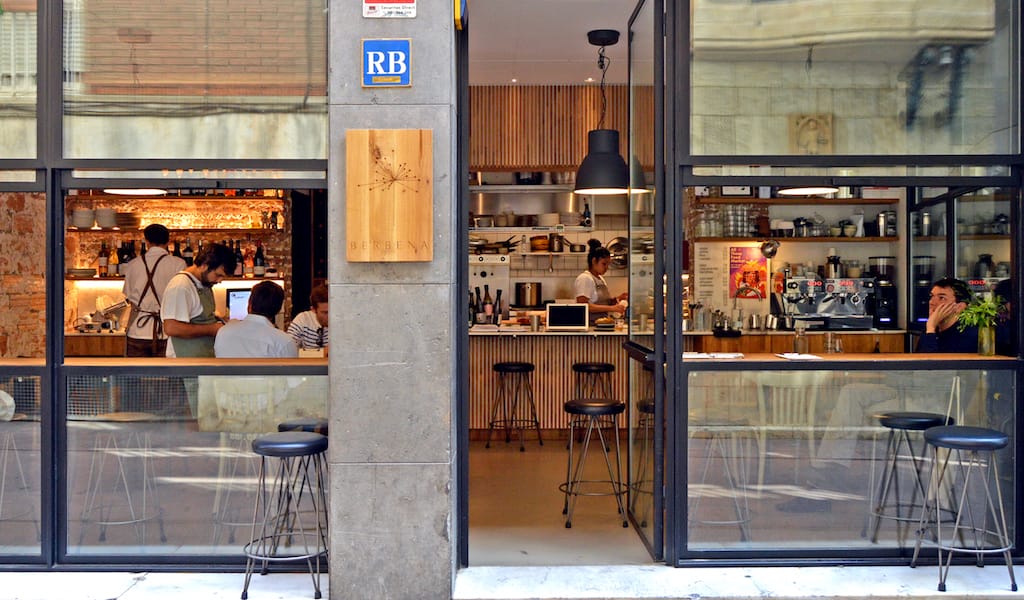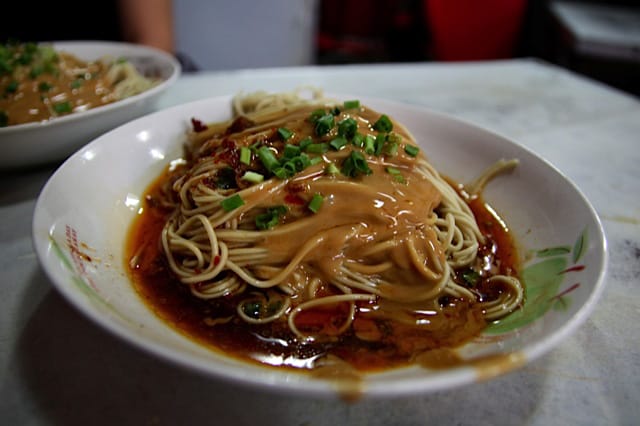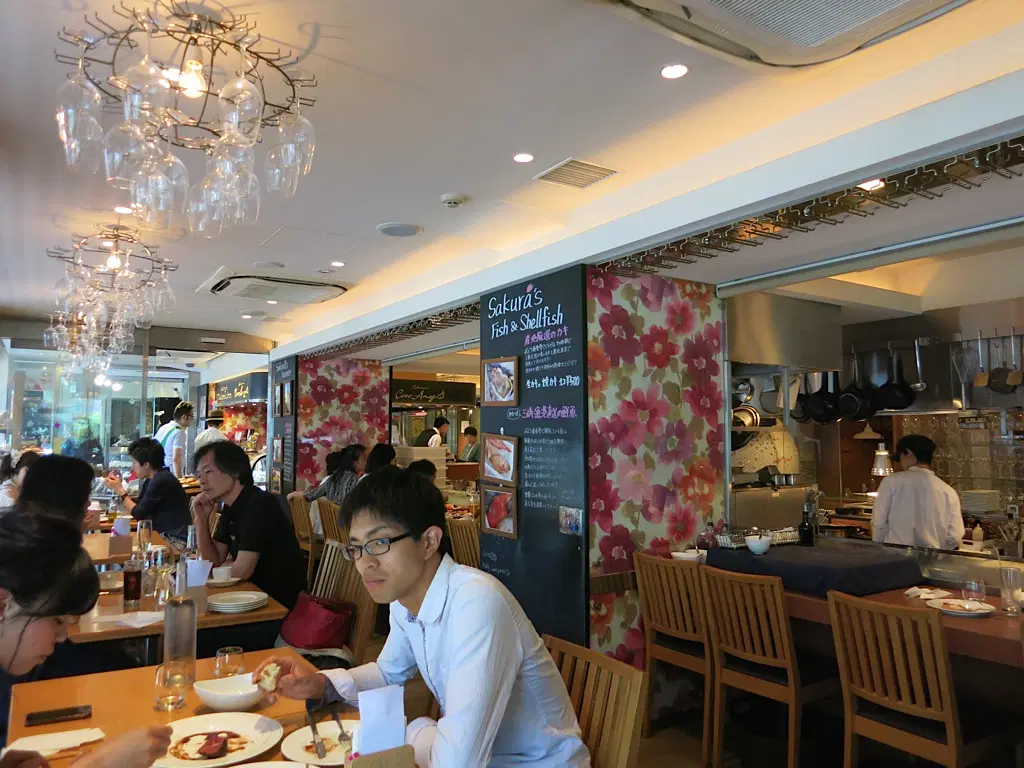At first glance, Berbena, a restaurant in Gràcia, resembles a small, pretty tree with dazzling foliage – it offers a sophisticated and complex dining experience. But the restaurant’s delicate attributes, those pretty leaves, wouldn’t be possible without a carefully tended trunk and roots. In short, the basics matter, something that its creator, chef Carles Pérez de Rozas, decided after years spent in high-end kitchens.
Carles had a culinary education par excellence: After studying at the prestigious Hofmann School, a culinary institution in Barcelona, he worked at several Michelin-starred restaurants in Catalonia, such as Drolma, Saüc, and Carmen Ruscalleda’s iconic Sant Pau. A job in the restaurant at the Hotel de Ville de Crissier brought him to Switzerland; he then spent a short and intense period in France with the great chef Michel Bras. In Japan, he trained alongside Seiji Yamamoto, in his Tokyo restaurant Nihonryori RyuGin, adding more notches of refined knowledge to his belt.
Working in such elite kitchens taught Carles important skills. And yet, even though he never complained about the long hours, he found the pressure that flooded these kitchens to be dehumanizing and was sometimes perplexed by the incoherence in strategy. “It was surprising to see how they were constructing a wonderful pretty building on weak supports, leaving the most basic elements of the cuisine completely unattended,” he told us.
 His decision to pursue a different type of restaurant work was cemented in Lima, Perú. He was there to work at the much-lauded Central, before the lights of fame had shined on chef Virgilio Martínez Véliz. But he was most inspired by El Pan de la Chola, a Lima bakery and restaurant opened by Jonathan Day, where the bread, made in an artisanal way with the best local grains, is the star of the table. “That was where I decided to split off from haute cuisine to return to something more elemental, more worldly,” Carles explained.
His decision to pursue a different type of restaurant work was cemented in Lima, Perú. He was there to work at the much-lauded Central, before the lights of fame had shined on chef Virgilio Martínez Véliz. But he was most inspired by El Pan de la Chola, a Lima bakery and restaurant opened by Jonathan Day, where the bread, made in an artisanal way with the best local grains, is the star of the table. “That was where I decided to split off from haute cuisine to return to something more elemental, more worldly,” Carles explained.
After years of traveling and working abroad, Carles came back home to Gràcia, the Barcelona neighborhood he grew up in. He worked for a few months at the wonderful coffee shop SlowMov while he was planning and searching for a space to open Berbena, his personal project. In fact, the restaurant occupies a building close to his childhood home – his life has come full circle.
Most of the products used in Berbena’s kitchen are organic, including vegetables, dairy products and fish (meat being the only exception). Yet at the core of this project, upon which everything else stands, is the special attention paid to basic ingredients: Water, coffee, beer, wine and, in particular, bread are the main stars here, not just afterthoughts. Carles is serious about offering elevated versions of these essentials: “I think the basics should be reclaimed as the foundation of the meal pyramid… a wonderful bread or specialty coffee or craft beer [must be offered] in a restaurant as part of the menu.”
The specialty coffee at Berbena is (unsurprisingly) provided by the magnificent SlowMov, served as filtered coffee or espresso in their Marzocco machine. The beers on tap are light and floral craft pale ales from two Catalan breweries, Cyclic Beer Farm and DosKiwis; they’re refreshing, delicious and pair well with food. The wines come from the selection of Clos Terroir, a distributor that works only with wines fermented from natural wild yeasts, and Wine is Social, another distributor, resulting in a varied (and continually growing) cellar of Catalan and Spanish wines, mostly natural (50 percent), organic and biodynamic. The top seven or eight different artisan cheeses on offer, like the Spanish award-winning Retorta Pascualete made with raw sheep’s milk or the unique Bichonier de Xavier made with raw goat’s milk, come from a family distributor called Ardain. And, finally, water is purified using a reverse osmosis system and offered for free, a rarity in Barcelona – you can drink as much as you’d like.
Yet at the core of this project, upon which everything else stands, is the special attention paid to basic ingredients.
As for bread, Berbena bakes two kinds of high quality bread every day from natural sour yeast and organic flours from the Cerecinos mill in Zamora: one a mix of white and whole grain wheat flour, the other a rye bread with seeds. The dough is made the day before, ferments overnight and is then baked fresh the next day for lunch and dinner.
The cuisine incorporates elements from Carles’ varied career: The dishes have a Catalan base and incorporate local flavors but are enriched by international touches. For the lunch menu, they adapted the practice Carles observed at Dersou in Paris and Maru in Brussels, with the option of one main dish and two sides, as well as dessert and a filtered coffee for around €15. For dinner, you can begin by choosing the bread you want, either with tomato rubbed on it (when in season) or served with other specialty products, such as fig leaf syrup, crème crue, different honeys or just a wonderful EVOO made by Can Catalá from Farga olives.
The dishes – small plates made for sharing – are constructed according to criteria Carles learned from the masters. “The proper pairing of selected products is something we totally respect. We choose three to four products maximum, and we connect them,” he said. “This is a system from Christian Francesco Puglisi, of Relae restaurant in Denmark. His cuisine is always one-two-three, two ingredients and a third one to prop them up. The origin of this idea is Michel Bras himself – he chooses a principal noble ingredient, another secondary to pair it and a third one that is the ñac, the final punch.”
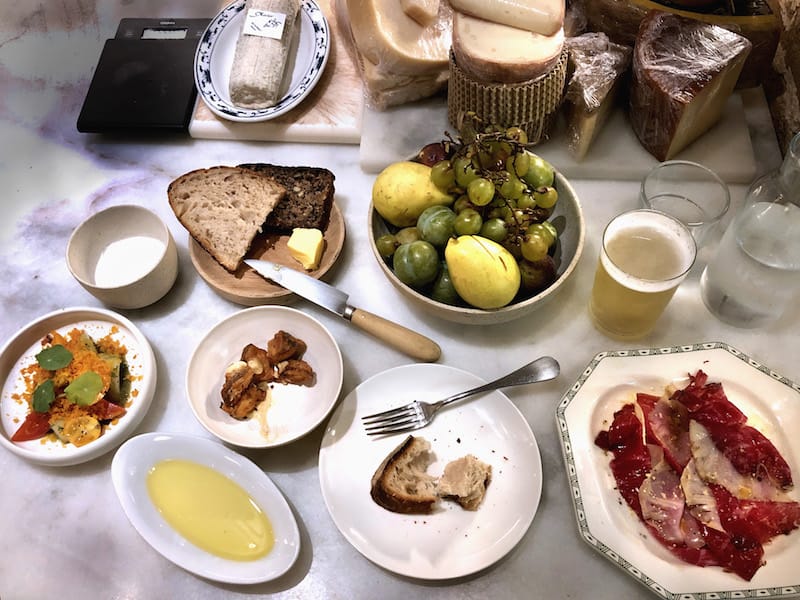
For example, their exquisite thinly sliced cecina (dried and cured beef) – the main product – is paired with fresh celeriac that is also thinly sliced, with the “ñac” touch being grated lemon and black pepper. Or another dish we loved for its evocative power is the Amish tomato and cucumber salad with grated botarga (cured fish roe), which is expressively decorated with nasturtium leaves. The aquatic vegetables soften the ocean taste of the botarga, resulting in a refreshing and succulent experience that is more freshwater than saltwater.
“We create a free cuisine that fluctuates with the seasons and is built on local flavors, with occasional Asian or Peruvian touches, but avoiding topics like the ever-present ceviche, which in our case is a carpaccio of marinated corvine with sake and miso,” said Carles.
The incorporation of international flavors to local recipes is discreet and results in some outstanding dishes, like the delicious and subtle razor clams with rossinyols (golden chanterelle mushrooms, which are very common in Catalonia) dressed with a vinaigrette made of almonds and hazelnut tahini (an Asian nut paste traditionally made from sesame seeds) that called to mind a traditional, if less delicate, Catalan almond picada, all decorated with chervil.
Desserts are always served with some ice cream from Parallelo, one of the best gelato producers in the city and Berbena’s neighbors. You can try their surprising and soothing milk gelato with olive oil and a touch of salt as a last stop in this growing culinary pleasure, from the sturdy trunk of basics done well right up to the final brilliant leaves.
 March 17, 2013 Wei Xiang Zhai
March 17, 2013 Wei Xiang Zhai
Sometimes a word in Chinese so perfectly captures a mood or feeling that the English […] Posted in Shanghai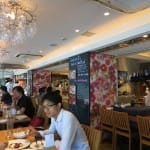 September 15, 2015 Café Sakura
September 15, 2015 Café Sakura
Roppongi’s Café Sakura serves as a restaurant and seating area for a bundle of […] Posted in Tokyo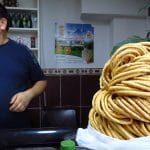 September 5, 2018 Köklem Uygur Yemekleri
September 5, 2018 Köklem Uygur Yemekleri
It’s the eve of Kurban Bayramı, and while most of Istanbul is eerily empty, the tables […] Posted in Istanbul
Published on September 17, 2019
Related stories
March 17, 2013
ShanghaiSometimes a word in Chinese so perfectly captures a mood or feeling that the English approximation seems woefully inadequate. To take one example, the Chinese combine “hot” (热) and “noise” (闹) to describe the loud and lively nature of local hotspots, but in English, the best we can do is “bustling.” To experience what China’s…
September 15, 2015
TokyoRoppongi’s Café Sakura serves as a restaurant and seating area for a bundle of businesses under the same ownership. There’s the Café with table service, the Wine Shop Sommelier (retail wines straight from the vineyard at considerable discount), L’Atelier du Pain (a Japanese-style bakery and cheese shop) and the French patisserie Coco Ange. Put them…
September 5, 2018
Istanbul | By Lorenza Mussini
IstanbulIt’s the eve of Kurban Bayramı, and while most of Istanbul is eerily empty, the tables at Köklem Uygur Yemekleri in Çapa, a neighborhood in the Fatih district, are quickly filling up. A young couple calmly chats, using chopsticks to pick up sautéed chicken slathered in soy sauce. At a nearby table a man sits…







































